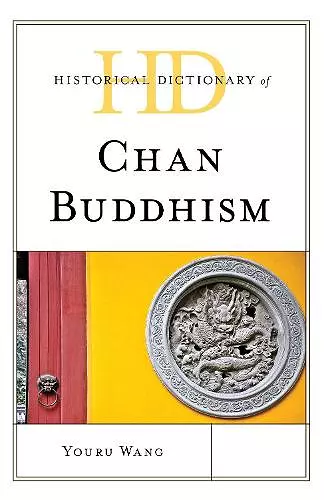Historical Dictionary of Chan Buddhism
Format:Hardback
Publisher:Rowman & Littlefield
Published:27th Jun '17
Currently unavailable, and unfortunately no date known when it will be back

The popular name for Chan Buddhism, in the West, is Zen Buddhism, as it was Japanese scholars who first introduced Chan Buddhism to the West with this translation. Indeed, chan is a shortened form of the Chinese word channa, rendered from the Sanskrit word dhyāna, which denotes practices of the concentration of the mind through meditation or contemplation. Although rooted in the Indian tradition of yoga, which aims at the unification of the individual with the divine, meditative concentration became integrated into the Buddhist path to enlightenment as one of the three learnings (sanxue) of Buddhism. Early Buddhist (or the so-called Hinayana Buddhist) scriptures include the teachings on four stages of meditation, four divine abodes, four formless meditations, the tranquility (samatha) and insight (vipassanā) meditations, and so on. Early Buddhist communities commonly practiced these meditations, along with the moral disciplines and the study of the scriptures and doctrines. Mahayana Buddhism, in India and East Asia, continued the practice of meditation as one of the six perfections (or virtues) of the bodhisattva path. In this general context, some eminent monks might have composed scriptures/treatises for the training of meditation or have become more famed with meditation. However, the school of Chan is more than just a group of meditation practitioners. As one of the Chinese Buddhist schools, it involves its own ideology, its own community, and its own genealogical history, serving to establish its own identity. The Historical Dictionary of Chan Buddhism contains a chronology, an introduction, and an extensive bibliography. The dictionary section has over 400 cross-referenced entries on important personalities, schools, texts, vocabularies, doctrines, rituals, temples, events, and other practices. This book is an excellent resource for students, researchers, and anyone wanting to know more about Chan Buddhism.
Chan Buddhism, more commonly known in the West as Zen Buddhism, is one of the most important—and innovative—traditions of Buddhist thought and practice. This volume by Wang covers the full chronology of Chan Buddhism, from 148 CE to the present. The introductory chapter provides a quality summary of the development of various schools and lineages and summarizes major thematic development. The entries are organized using transliterations of proper names and English translation of significant concepts. The author has made appropriate and judicious use of see references to assist readers in navigating the text.... [F]or advanced students and scholars of Buddhism, the extensive bibliography and the glossary of Chinese terms, which handily provides the characters linked to their transliteration, make this dictionary a worthwhile purchase. Summing Up: Recommended. Upper-level undergraduates through researchers/faculty. * CHOICE *
This book, part of the Historical Dictionaries of Religions, Philosophies, and Movements series, focuses on the history of Chan Buddhism, or Zen Buddhism as it is known to the West. The history of Zen Buddhism, as detailed in the chronology and introduction, extends from 148 C.E. to the present, and encompasses a number of key events and individuals. Each essay is concise and brief, with related terms bolded for additional reference. A glossary of Chinese terms is included, along with an extensive bibliography subdivided into Reference Works, Primary Texts, General and Historical Studies, Textual Studies and Translations, Philosophical and Doctrinal Studies, Studies on various Chan sects/schools and lineages, Studies on monastic institutions and practices, and social-political and cultural studies. This book would be an excellent addition and introductory reference work in K-12 and academic libraries. * American Reference Books Annual *
ISBN: 9781538105511
Dimensions: 240mm x 156mm x 34mm
Weight: 762g
386 pages